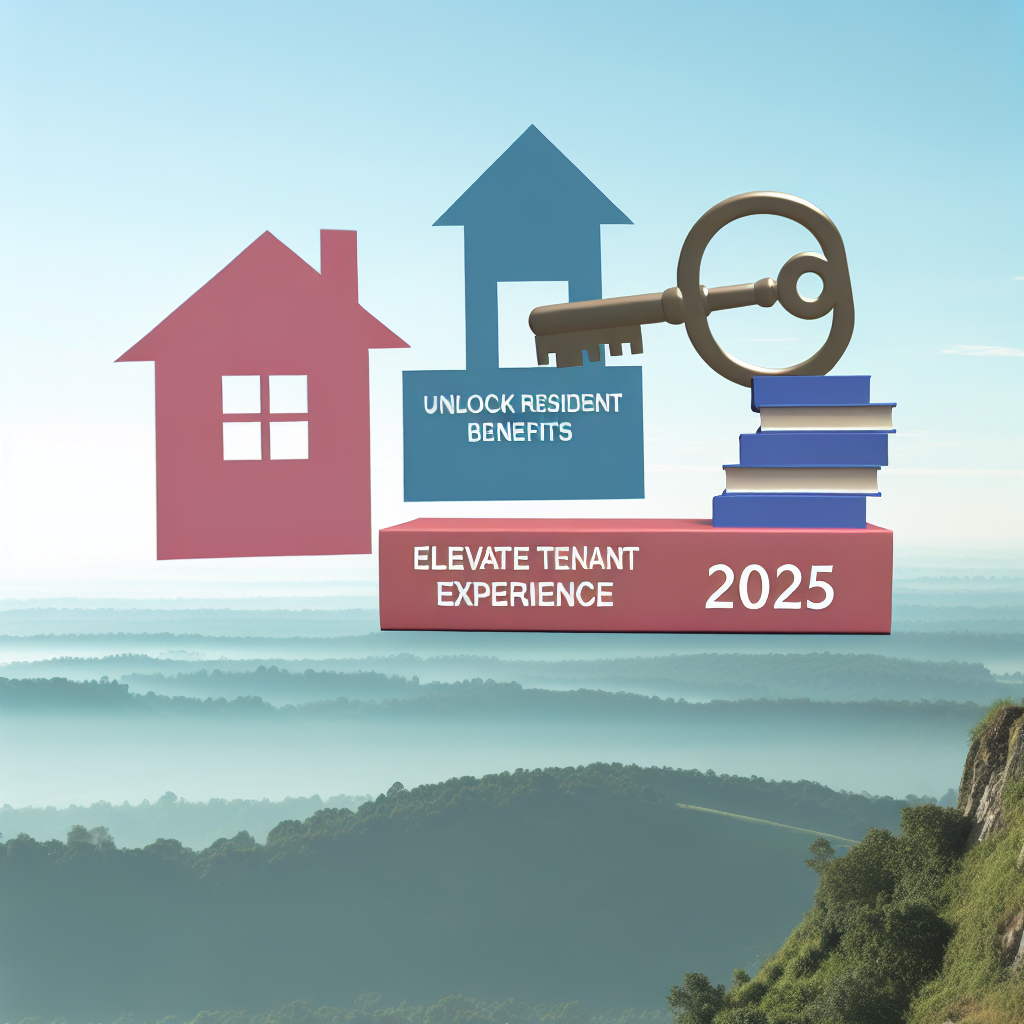Maximizing Resident Benefits: Top Community Amenities to Enhance Tenant Experience in 2025
As we approach 2025, the landscape of residential living continues to evolve, with a growing emphasis on enhancing tenant experiences through community amenities. The modern resident seeks more than just a place to live; they desire a community that offers convenience, comfort, and a sense of belonging. To meet these expectations, property managers and developers are increasingly focusing on maximizing resident benefits by integrating top-tier amenities that cater to diverse needs and preferences. This shift not only enhances tenant satisfaction but also contributes to higher retention rates and property value.
One of the most significant trends in community living is the integration of smart technology. As technology becomes more ingrained in daily life, residents expect their living spaces to reflect this advancement. Smart home features, such as automated lighting, climate control, and security systems, are becoming standard offerings. These technologies not only provide convenience but also promote energy efficiency, aligning with the growing demand for sustainable living solutions. Furthermore, high-speed internet and robust Wi-Fi connectivity are essential, supporting the increasing number of residents who work remotely or engage in online education.
In addition to technological advancements, wellness-focused amenities are gaining prominence. Health and well-being have become central to the residential experience, prompting communities to offer facilities such as state-of-the-art fitness centers, yoga studios, and outdoor recreational spaces. These amenities encourage an active lifestyle and provide residents with opportunities to unwind and connect with nature. Moreover, wellness programs, including group fitness classes and mental health workshops, are being introduced to foster a holistic approach to health.
Community engagement is another critical aspect of enhancing tenant experience. Creating spaces that facilitate social interaction and foster a sense of community is paramount. Common areas such as lounges, co-working spaces, and communal kitchens serve as hubs for residents to gather, collaborate, and build relationships. Organizing regular events, such as movie nights, cooking classes, and cultural festivals, further strengthens community bonds and creates a vibrant living environment.
Sustainability is also a key consideration in modern residential communities. As environmental awareness grows, residents are increasingly seeking eco-friendly living options. Developers are responding by incorporating green building practices, such as energy-efficient appliances, solar panels, and rainwater harvesting systems. Additionally, community gardens and recycling programs are being implemented to promote sustainable living practices among residents. These initiatives not only reduce the environmental footprint but also appeal to environmentally conscious tenants.
Moreover, pet-friendly amenities are becoming a standard feature in many communities. Recognizing the importance of pets in residents’ lives, developers are creating pet-friendly environments that include dog parks, pet washing stations, and pet-sitting services. These amenities cater to pet owners and enhance the overall appeal of the community.
In conclusion, the future of residential living is centered around creating communities that offer a comprehensive range of amenities designed to enhance the tenant experience. By integrating smart technology, wellness-focused facilities, community engagement initiatives, sustainability practices, and pet-friendly features, property managers and developers can create vibrant, inclusive communities that meet the evolving needs of modern residents. As we move into 2025, these enhancements will not only improve tenant satisfaction but also contribute to the long-term success and sustainability of residential properties.
Elevating Community Value: Innovative Property Perks for Convenient Living
As we approach 2025, the landscape of community living is evolving rapidly, with property developers and managers increasingly focusing on innovative perks that enhance the value of residential communities. This shift is driven by a growing demand for convenience, sustainability, and a sense of belonging among residents. To meet these expectations, experts suggest a range of strategies that not only elevate the living experience but also contribute to the overall appeal of the community.
One of the most significant trends in enhancing community value is the integration of smart technology. By incorporating smart home features and community-wide digital platforms, property managers can offer residents unprecedented convenience and control over their living environments. For instance, smart thermostats, lighting systems, and security features can be managed remotely, allowing residents to customize their homes to suit their preferences. Moreover, community apps can facilitate communication between residents and management, streamline maintenance requests, and even organize community events, thereby fostering a more connected and engaged community.
In addition to technological advancements, sustainability remains a key focus for enhancing community value. As environmental concerns continue to rise, residents are increasingly seeking eco-friendly living options. Property developers can address this demand by implementing green building practices, such as using sustainable materials and incorporating energy-efficient systems. Furthermore, the inclusion of community gardens, recycling programs, and electric vehicle charging stations can significantly enhance the community’s appeal to environmentally conscious residents. These initiatives not only reduce the community’s carbon footprint but also promote a healthier and more sustainable lifestyle.
Another critical aspect of elevating community value is the creation of shared spaces that encourage social interaction and foster a sense of belonging. Experts emphasize the importance of designing communal areas that cater to diverse interests and activities. For example, multipurpose rooms can be used for fitness classes, workshops, or social gatherings, while outdoor spaces such as parks, walking trails, and playgrounds provide opportunities for residents to connect with nature and each other. By offering a variety of amenities that cater to different age groups and lifestyles, communities can create an inclusive environment where all residents feel welcome and valued.
Moreover, the provision of on-site services and amenities can greatly enhance the convenience of community living. By offering facilities such as fitness centers, co-working spaces, and childcare services, property managers can meet the diverse needs of residents and reduce the need for them to travel outside the community for these services. This not only saves time and effort but also strengthens the community’s appeal as a self-sufficient and convenient place to live.
Finally, fostering a strong sense of community through regular events and activities is essential for enhancing community value. By organizing social events, cultural celebrations, and volunteer opportunities, property managers can encourage residents to engage with one another and build lasting relationships. These interactions not only enhance the quality of life for residents but also contribute to a more vibrant and cohesive community.
In conclusion, as we look towards 2025, the focus on innovative property perks and community enhancements is set to redefine the residential experience. By embracing smart technology, sustainability, shared spaces, on-site services, and community engagement, property developers and managers can create communities that offer unparalleled convenience and value. These efforts not only meet the evolving needs of residents but also ensure the long-term success and appeal of residential communities.
Expert Tips for 2025: On-Site Trash Solutions and Other Strategies to Boost Resident Satisfaction
As we approach 2025, the landscape of community living continues to evolve, with a growing emphasis on enhancing resident satisfaction through innovative solutions and strategic planning. One of the key areas of focus is the implementation of on-site trash solutions, which not only streamline waste management but also contribute significantly to the overall living experience. By addressing this often-overlooked aspect of community living, property managers can foster a cleaner, more organized environment that residents will appreciate.
To begin with, the integration of advanced waste management systems is crucial. These systems, which include features such as automated trash compactors and recycling stations, are designed to handle waste more efficiently. By reducing the frequency of waste collection and minimizing the environmental impact, these solutions not only enhance convenience for residents but also align with broader sustainability goals. Moreover, the implementation of smart waste management technologies, such as sensors that monitor bin levels and optimize collection schedules, can further streamline operations and reduce costs.
In addition to technological advancements, fostering a sense of community through shared responsibilities can greatly enhance resident satisfaction. Encouraging residents to participate in recycling programs and community clean-up events can instill a sense of pride and ownership in their living environment. This collaborative approach not only improves the physical appearance of the community but also strengthens social bonds among residents, creating a more cohesive and supportive living atmosphere.
Furthermore, effective communication plays a pivotal role in ensuring the success of on-site trash solutions and other community initiatives. Keeping residents informed about waste management policies, recycling guidelines, and upcoming community events can significantly enhance their engagement and compliance. Utilizing digital platforms, such as community apps or online portals, can facilitate seamless communication and provide residents with easy access to important information. This transparency and accessibility can lead to increased trust and satisfaction among residents.
Beyond waste management, there are several other strategies that can be employed to boost resident satisfaction. For instance, investing in the aesthetic appeal of the community through landscaping and regular maintenance can create a welcoming and pleasant environment. Additionally, offering amenities such as fitness centers, communal gardens, and recreational areas can greatly enhance the quality of life for residents. These amenities not only provide opportunities for relaxation and leisure but also serve as venues for social interaction and community building.
Moreover, prioritizing safety and security is paramount in enhancing resident satisfaction. Implementing measures such as surveillance systems, secure access points, and well-lit common areas can provide residents with peace of mind and contribute to a sense of well-being. Regularly reviewing and updating these measures in response to emerging trends and technologies can further bolster the community’s safety infrastructure.
In conclusion, as we look towards 2025, the focus on resident benefits and community living enhancement is more important than ever. By adopting innovative on-site trash solutions, fostering community engagement, and prioritizing effective communication, property managers can significantly boost resident satisfaction. Coupled with investments in aesthetics, amenities, and security, these strategies can create a thriving community that residents are proud to call home. As the dynamics of community living continue to evolve, staying ahead of these trends will be key to ensuring long-term success and satisfaction for all residents.
Unlock the full potential of your community living experience with our expert tips for 2025! Discover how to enhance resident benefits and create a thriving environment for all. Don’t miss out—[click here](https://americantrashservice.com) to learn more!



